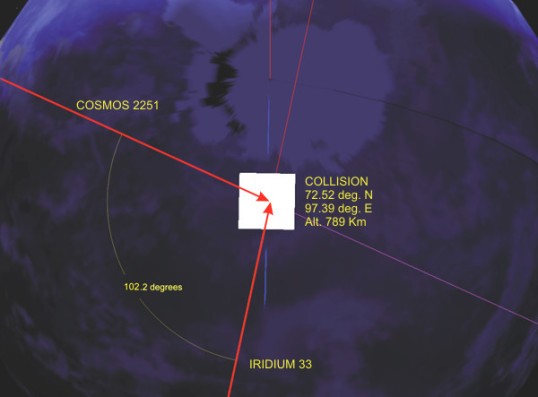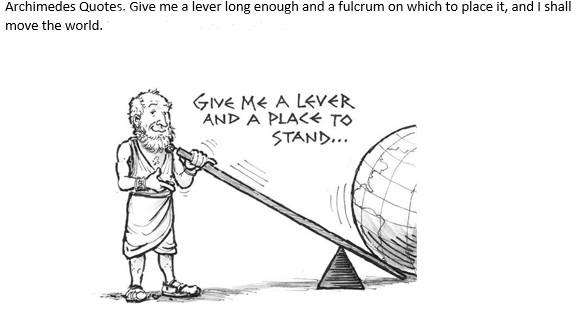One Chance in 50 Million – Satellites Collide!
February 10, 2009: Satellites Collide!
Communications satellites Iridium 33 (USA) and Kosmos-2251 (Russia) collide in orbit, destroying both. This was the first major collision of satellites in Earth orbit. The collision occurred over Siberia and stunned the aerospace community who realized there were no rules to the road in the finite orbital planes above Earth.
The incident did help to foster cooperation among space-faring nations, most notably JSpOC (Joint Space Operations Center) which works to share orbital data information.
Kosomos-2251 was a military communications satellite launched in 1993 and had been deactivated. Iriduum 33 was one of 66 communications satellites launched in 1997.
The 2009 collision was the first hypervelocity collision between two intact artificial satellites in Earth Orbit. The satellites collided at a speed of 26,170 mph (42,120 kmh).
NASA estimated that the collision created about 1,000 pieces of debris larger than 4 inches. By 2011, U.S. Space surveillance Network cataloged over 2000 large debris fragments.
U.S. space agency NASA estimated that the satellite collision created approximately 1,000 pieces of debris larger than 10 centimeters (4 inches), in addition to many smaller ones. By July 2011, the U.S. Space Surveillance Network had cataloged over 2000 large debris fragments. By December 2011, many pieces of debris were in a steady decay towards Earth and expected to burn up in the atmosphere within one or two years.
A small piece of Kosmos debris safely passed by the International Space Station on March 24, 2012. As a precaution, the six crew members on board took refuge inside the two docked Soyuz rendezvous spacecraft until the debris had passed.
John Campbell of Iridium, speaking at a 2007 forum, estimated the risk of a collision per conjunction as one in 50 million.

Here’s how the orbits of fragments from the collision of two satellites in February 2009 are likely to evolve, based on models by orbital-debris specialists at NASA’s Johnson Space Center. NASA / N. Johnson
This collision and numerous near-misses have renewed calls for mandatory disposal of defunct satellites (typically by deorbiting them), but no such international law exists yet. Nevertheless, some countries have adopted such a law, such as France in December 2010.






